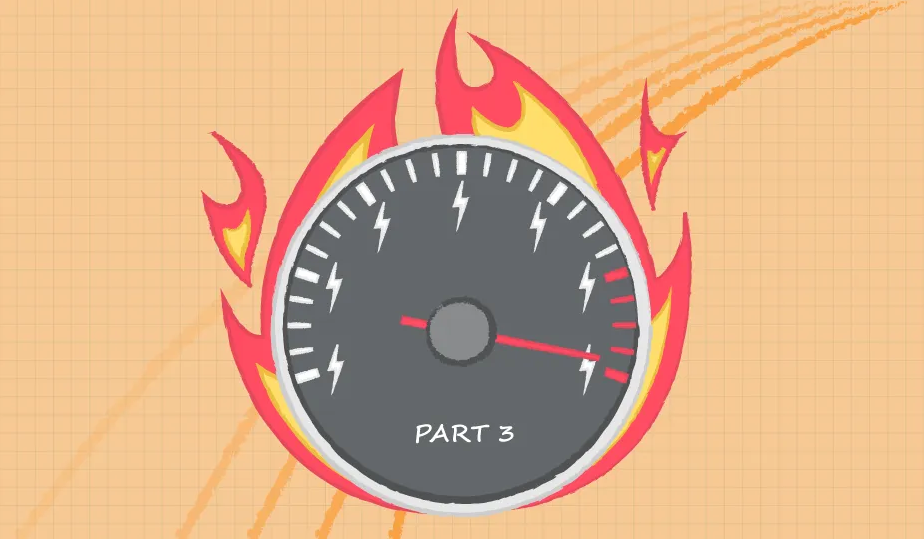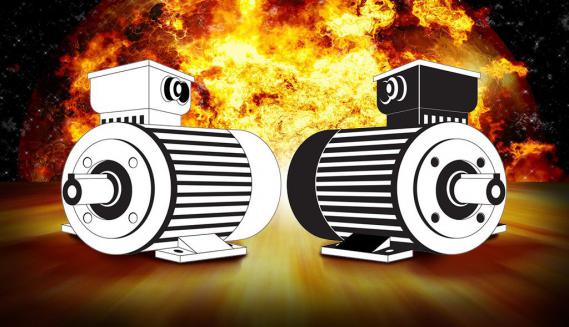Have you encountered the phenomenon that the surface of the motor is seriously hot after the motor runs for a period of time when the motor is in the sample test?
This article will answer you in great detail and give you some very useful solutions.

Causes the motor to heat up
1.The ambient temperature is too high. If the ambient temperature exceeds 40 ℃, the motor temperature will rise.
2. The surrounding environment is seriously polluted by dust. Motors operating for a long time in this environment absorb a lot of dust, which blocks the gap between the coils at the end and the ventilation holes of the iron core (if the bearing leaks oil, the blockage is more serious), resulting in a greatly reduced air intake and overheating of the motor. .
3. The driven machinery fails (with friction or jamming), the stator and the rotor collide, the motor makes a metal impact sound, and even causes the motor to get stuck and does not rotate, causing the motor to over-current and heating, the temperature of the iron core rises rapidly, serious When the motor smokes, or even the coil burns.
4. Short circuit between cold air and hot air. For centrifugal fans, because the gap between the windshield of the end cover and the fan is too large, the low-pressure wind and the high-pressure wind are short-circuited, which reduces the air volume entering the motor and causes the motor to overheat.
5. The power supply voltage is too high. The motor operates within a 5~+10% change in the rated voltage, and the rated output can be kept unchanged. If the power supply voltage exceeds 10% of the rated voltage, the magnetic flux density of the iron core will increase sharply, and the motor will overheat due to the increase in iron loss.
6. The power supply is out of phase, and the motor winding or wiring is disconnected in one phase, so that the motor only works in two phases. If the power supply is out of phase, causing the single-phase operation of the motor, the windings of the motor will be rapidly heated and burned in a short time.
7. The cooler of the motor fails, or the air leakage is not strictly blocked, and the hot air directly leaks into the cold air area, which increases the air temperature of the motor population and causes the motor to overheat.
8. When the indoor exhaust system fails, the hot air discharged by the motor cannot be quickly discharged, and is immediately sucked in by the motor, causing the motor to overheat.
9. Motors with axial flow fans, if the fan rotates in the opposite direction, will also cause the motor to overheat. Excessive load. The windings are partially short-circuited or grounded, the motor is overheated locally in light cases, and the insulation is burned out in severe cases, emitting burnt smell or even smoke.
10. The external wiring of the motor is wrong, and there are two situations as follows: (1) The △ connection should be mistakenly connected to the Y connection, so that the current is very small at no-load, although the load can be driven at light load, but the current exceeds the rated value, so that The motor is hot. (2) The Y connection method should be mistakenly connected to the △ connection method, so that the current may be greater than the rated current at no-load, so that the temperature of the motor rises rapidly.
11. If the fluctuation of the power supply voltage is too large, the fluctuation range of the power supply voltage should be controlled between -5~10%, otherwise the load of the motor should be controlled. After overhaul, the number of turns of the coil is wrong or a certain pole, phase and group wiring are wrong.
12. After the overhaul, the wire section is smaller than the original section.
13. The stator and rotor iron cores are seriously dislocated. Although the no-load current is three-phase balanced, it is greater than the specified value.
14. The squirrel-cage rotor is broken or defective. The temperature of the iron core rises rapidly after the motor runs for 1~2h, and even exceeds the winding temperature. When it is heavily loaded or fully loaded, the stator current exceeds the rated value.
15. The welding point of the rotor winding of the wound motor is de-soldered, or the welding is not good during inspection, which causes the rotor to overheat and the speed and torque decrease significantly.
16. The motor winding is damp, or there is dust, oil, etc. attached to the winding, so that the insulation is reduced.
17. The motor starts too frequently in a short time.

Troubleshooting methods:
1.If it is a new motor, the wiring should be checked first; if the wiring is ok, it should be determined whether the motor is overloaded.
2. If the motor runs normally for a period of time, first check whether the fan is normal.
3. If the heat dissipation is normal, the three-phase current should be checked to see if there is a phase loss. If there is a phase loss, the power supply should be cut off immediately to determine whether the winding is open circuit or there is a power supply problem.
4. If the power supply is normal, check whether the position of the stator and rotor is correct, and whether the mechanical transmission is stuck. The motor should be disassembled to check whether there are traces of sweeping on the iron core, find out the reason, and deal with it.
5. If there is no problem mechanically, measure the DC resistance of each phase of the winding to see if there is a short-circuit point, use a megohmmeter to check whether the winding is grounded, and clean and dry the motor.
6. For the squirrel cage rotor, check whether the rotor is broken or defective, and re-weld or replace the rotor.
7. For the winding rotor, check whether the DC resistance of the rotor winding is normal and whether the welding points are loose.
Optimization measures
Often, we can improve the environment, optimize the working process of the motor, and install thermal protection devices to prevent the motor from overheating:
1.First, improve the operating environment of the motor. The ventilation and cooling conditions should be improved. If the environment is not easy to change, the motor with a higher heat resistance level should be replaced.
2. Optimize the motor startup and operation process to avoid frequent motor startup.
3. Adopt effective overheat protection device to avoid motor overheating and burn out, generally there are the following types:
(1) Use melt or air breaker as short-circuit protection device, and the protection characteristic curve is matched with the heating characteristic curve of the motor.
(2) Use thermal relays, etc. as the overload protection device of the motor, and the protection characteristic curve matches the heating characteristic curve of the motor.
(3) A temperature protection device is installed in the stator winding, and the circuit is automatically cut off when the motor is close to the maximum allowable temperature.
(4) A phase failure protection device is installed in the control circuit of the motor, and the power supply of the motor is cut off when the phase is disconnected.
(5) Install a low-voltage protection device in the control circuit, and cut off the power supply when the voltage is lower than a certain value. There may be other reasons for the heating of the motor, but we usually use the motor correctly in strict accordance with the operating procedures, maintain the motor correctly, make the surface of the motor clean, the current does not exceed the rated value, the vibration value is within the range, the running sound is normal, and the bearing is correct. Maintenance, etc., the service life of the motor will be extended.
If you don't know how to choose the motor that suits you, you can contact our sales staff, they will recommend the motor suitable for your product according to your product requirements
 BACK
BACK
On May 5, the 137th Canton Fair officially concluded. This "Made in China f…
Focusing on the industrial trend of the 2025 Canton Fair, BG Motor continues to …
On April 16, 1963, Martin Luther King Jr. famously wrote in Birmingham Prison th…
The 137th Canton Fair in the spring of 2025 will officially kick off on April 15…
Historical trends in electric vehiclesThe development of electric vehicles (EVs)…
In February 2025, BG Motor ushered in the traditional Lantern Festival celebrati…